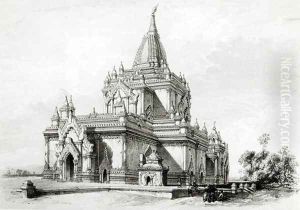Yule, Sir Henry Paintings
Sir Henry Yule was a distinguished Scottish Orientalist, geographer, and travel writer, born on May 1, 1820, in Inveresk, Scotland. Though not an artist in the conventional sense of painters or sculptors, Yule made significant contributions to the understanding and documentation of Asian geography and history through his detailed writings and maps. His work is highly regarded in the fields of historical geography and travel literature, bridging cultural gaps between the East and West during the Victorian era. Yule’s most notable achievement was his translation and commentary of 'The Book of Ser Marco Polo, the Venetian,' published in 1871. This seminal work offered the Western world one of the most detailed and comprehensive insights into the life and journeys of Marco Polo, as well as into the geography, culture, and politics of the Asia of Polo's time. Yule's meticulous annotations and commentary in this two-volume set were groundbreaking, providing rich historical, geographical, and ethnological information that greatly enhanced the understanding of Central Asia and China during the 13th century. His scholarship in this area established him as a leading authority on Asian travel narratives. In addition to his work on Marco Polo, Yule authored and edited other important texts, including 'Cathay and the Way Thither' and 'Hobson-Jobson: A Glossary of Colloquial Anglo-Indian Words and Phrases, and of Kindred Terms, Etymological, Historical, Geographical and Discursive,' co-authored with A.C. Burnell. 'Hobson-Jobson' is particularly notable for its insight into the British Raj's linguistic influence on India and remains a classic reference in the study of the British Empire in India. Yule's contributions were recognized by the Royal Geographical Society, which awarded him the prestigious Founder’s Gold Medal in 1877 for his contributions to geographical science. He was knighted in 1879, further acknowledging his significant contributions to Oriental studies and geography. Sir Henry Yule passed away on December 30, 1889, leaving behind a legacy that continues to be celebrated for its profound impact on the understanding of Asian cultures and geographies. His work remains a vital resource for historians, geographers, and scholars of Oriental studies, offering a window into the rich history and complex intercultural exchanges between the East and West.
